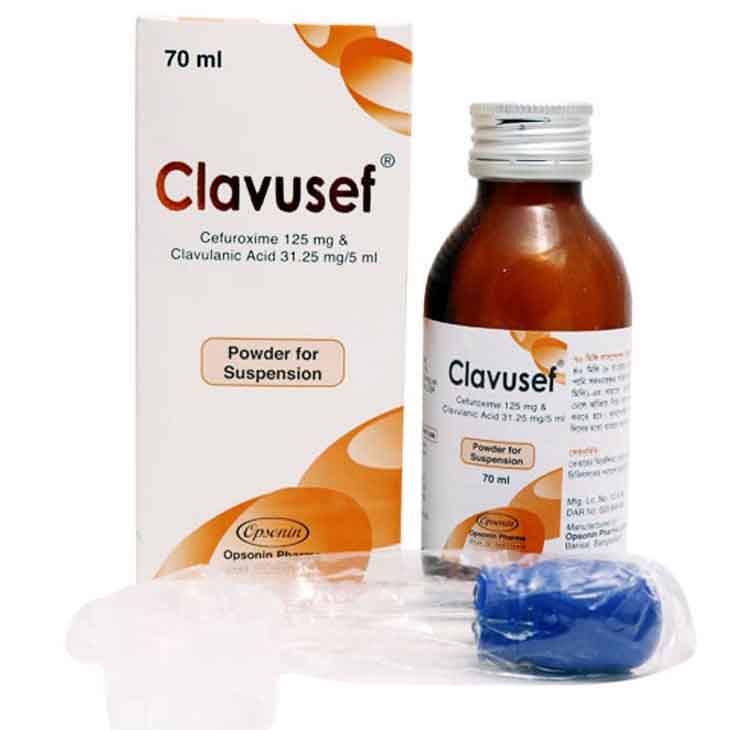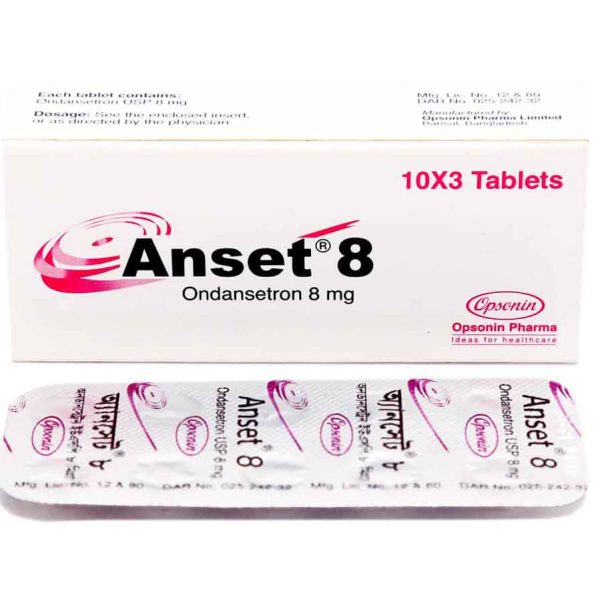Description
Brand Name: Clavusef ®125
Generic Name: Cefuroxime 125mg/ Clavulanic acid 31.25mg
Medicine Overvie of Clavusef ®125
Clavusef ®125 is a cephalosporin antibiotic fortified with a betalactamase inhibitor Clavulanic acid used highly effective in the treatment of systemic bacterial infections.
When to use
Uncomplicated urinary tract infections, respiratory tract infections, uncomplicated gonorrhoea, otitis media, meningitis, gonorrhoea, prophylaxis of surgical infections
How to use
Uncomplicated urinary tract infections Oral: Adults: 125 mg 2 times a day. Respiratory tract infections Oral: Adults: 250-500 mg 2 times a day. Children >3 months: 125 mg twice daily or 10 mg/kg twice daily. Uncomplicated gonorrhoea Oral: Adults: 1 gm as a single dose. 1 gm oral probenecid may be given concurrently Otitis media Oral: Children>2 years: 250 mg twice daily or 15 mg/kg twice daily up to 500 mg daily. Meningitis Parenteral: Adults: 3 gm every 8 hours. Children: 200-240 mg/kg/day in 3-4 divided doses, decreased to 100 mg/kg/day after 3 days or once symptoms have improved. Neonate: 100 mg/kg/day, decreased to 50 mg/kg/day when control has been achieved. Gonorrhoea Parenteral: Adults: 1.5 mg as a single dose divided between 2 injection sites. 1 gm oral probenecid may be given concurrently. Prophylaxis of surgical infections Parenteral: Adults: 1.5 gm intravenous before the procedure followed by 750 mg intramuscular every 8 hours for up to 24-48 hours depending on the procedure. For total joint replacement, 1.5 gm of cefuroxime may be mixed with methylmethacrylate cement. Susceptible infections Parenteral: Adults: 750 mg every 8 hours given as deep intramuscular or slow intravenous injection over 3-5 minutes or intravenous infusion, increased to 1.5 gm every 6-8 hours in severe infections. Children: 30-60 mg/kg/day, may increase to 100 mg/kg/day if necessary. To be given in 3-4 divided doses or 2-3 divided doses in neonates.
Risk Warnings
Large doses can cause cerebral irritation and convulsions, nausea, vomiting, diarrhoea, gastrointestinal disturbances, erythema multiforme, Stevens-Johnson syndrome, epidermal necrolysis, anaphylaxis, nephrotoxicity, pseudomembranous colitis.
Precautions
Precautions should be taken with the help of doctor if allergic conditions arise and also in the case of
• Penicillin allergy
• Renal impairment and also during pregnancy and breastfeeding.
• Report to the physician if the patients are allergic to the active ingredients and any other drugs.
THERAPEUTIC CLASS OF CLAVUSEF
Antibiotic- (2nd Generation Cephalosporins)
WHY Clavusef ®125 IS PRESCRIBED treatment of :
• Haemophilus influenzae
• Neisseria gonnorrhoeae
• Lyme disease
HOW TO TAKE
According to the dosage forms the following routes of administration are available:
• Oral
• Parenteral
• Ophthalmic
WHEN TO TAKE
As advised by the physician
HOW IT WORKS
The drug kills the bacteria by attacking their cell wall. It inhibits the final transpeptidation step of peptidoglycan synthesis in bacterial cell wall, thus inhibiting biosynthesis and arresting cell wall assembly resulting in bacterial cell death.
Food To Avoid
If you are allergic to any food, please consult with the physician.
Alcohol Interaction: Consumption of alcohol is not advisable.
Side Effects
Report to the physician immediately if the patients are having any of these following symptoms:
• Diarrhoea, Nausea, Vomiting, Abdominal pain, Loose stools, Dyspepsia, latulence, Anorexia, Pruritus, Dry mouth, Headache, Dizziness, Nervousness, Insomnia, Somnolence, Malaise, Fatigue, Seizures
Pregnancy/Lactation Protocol: Pregnancy Category: B and please consult with the physician during lactation.






